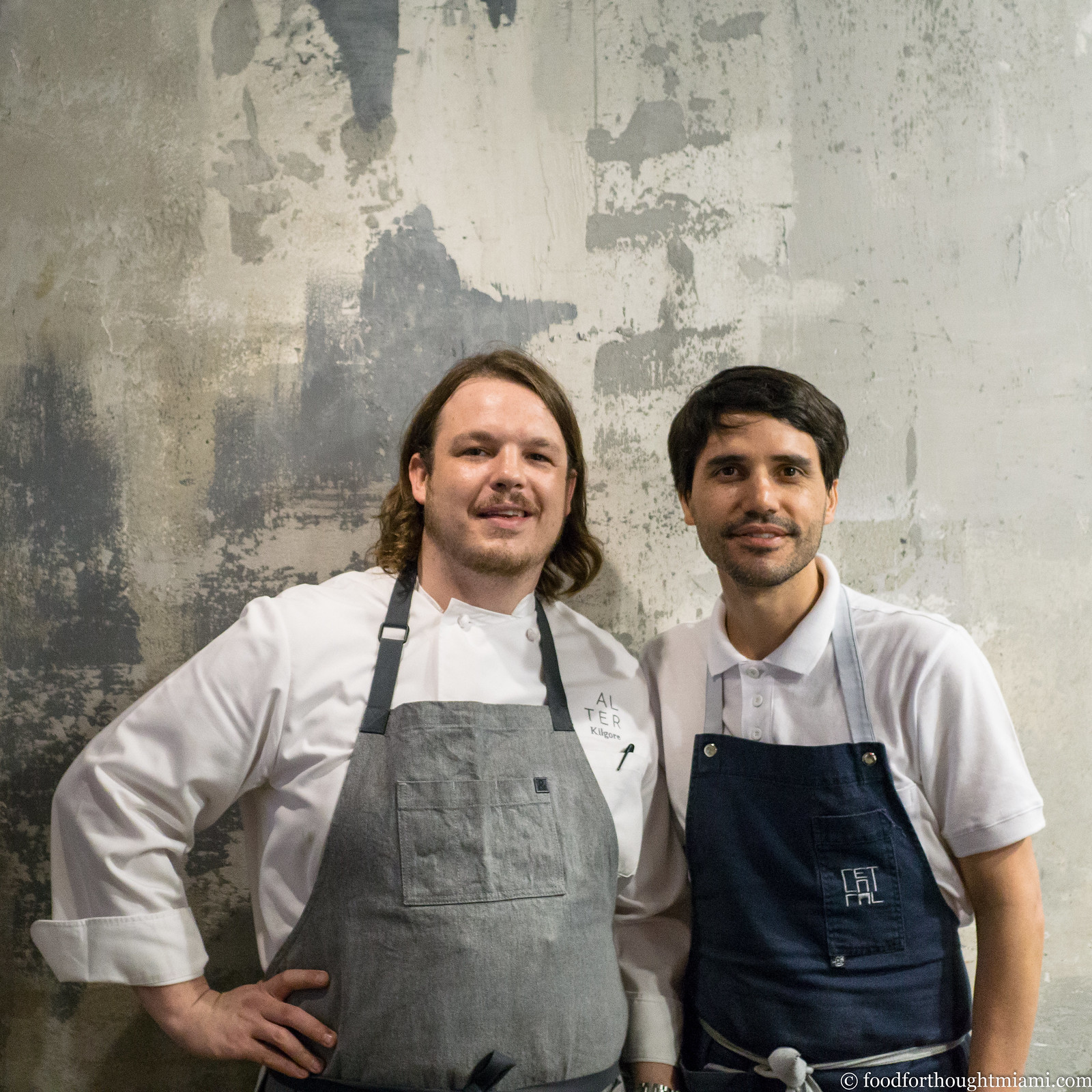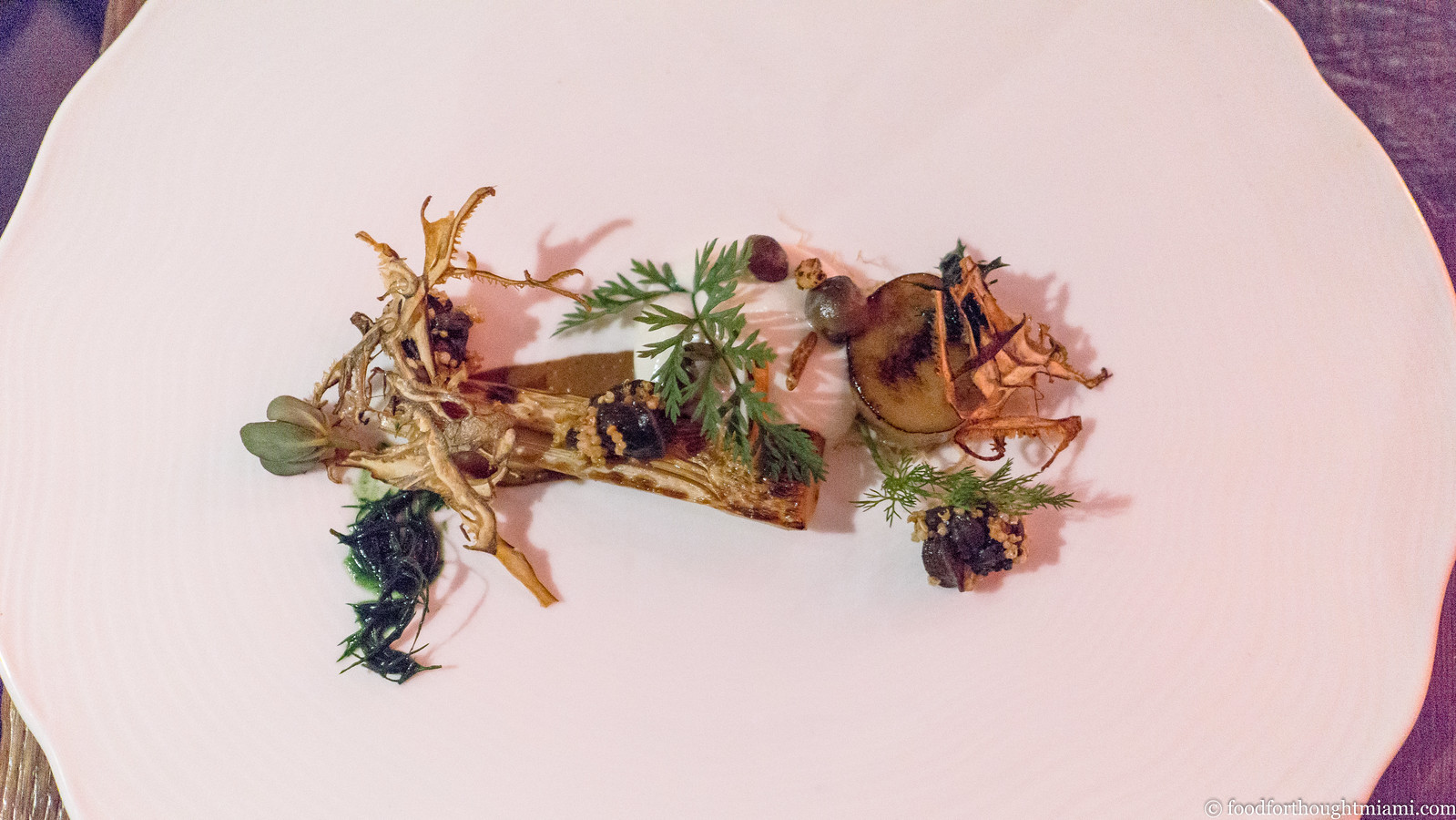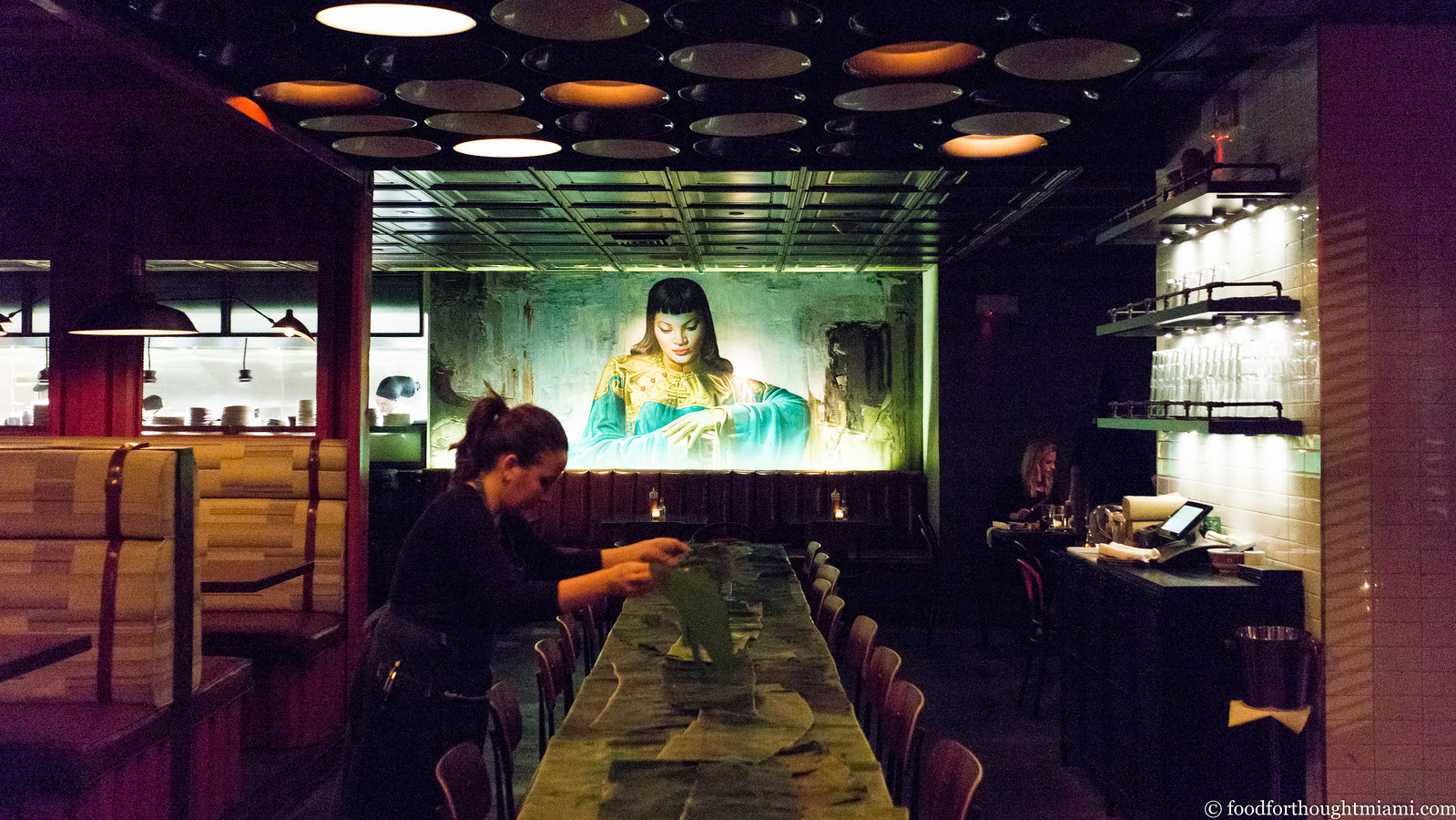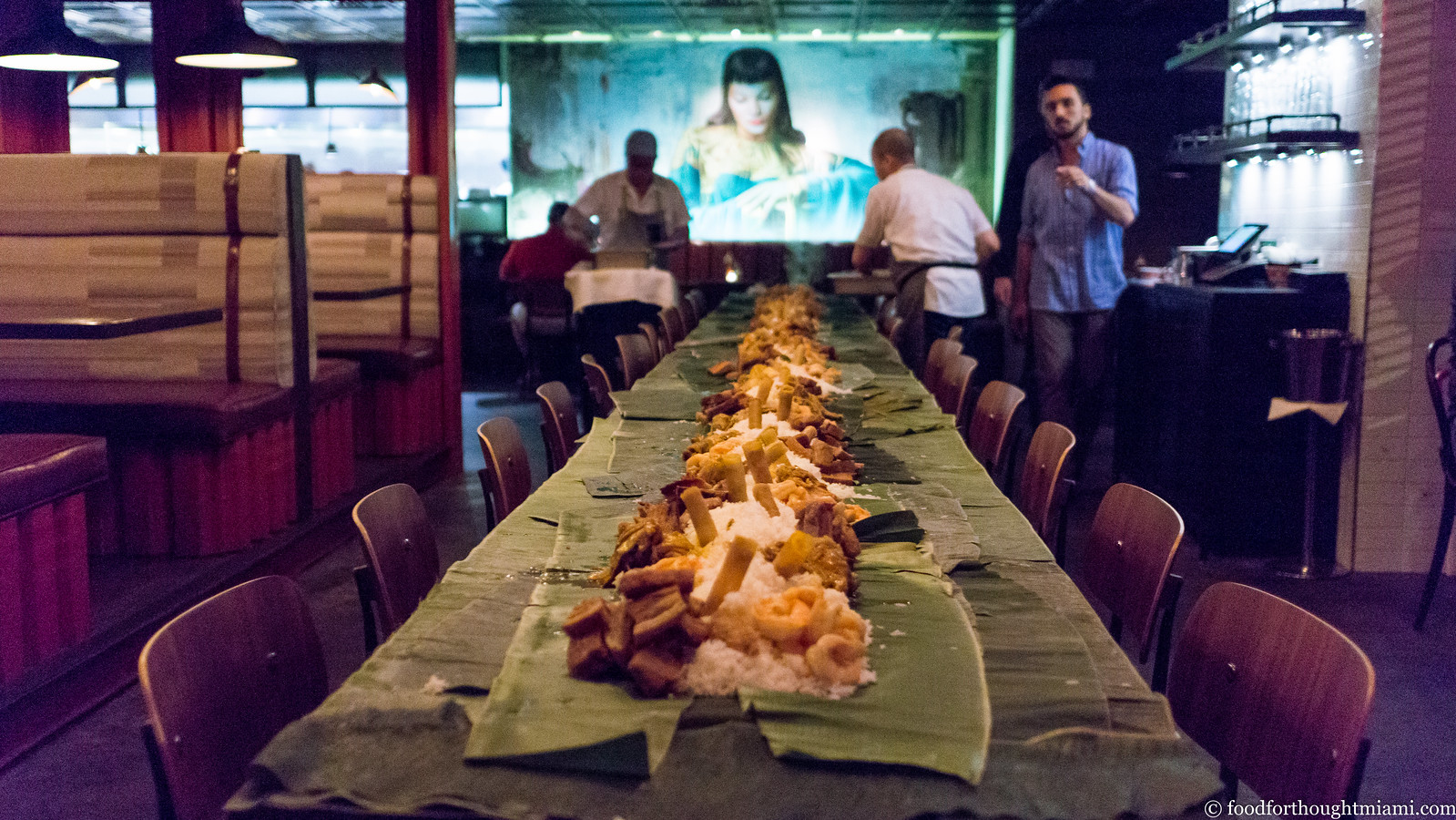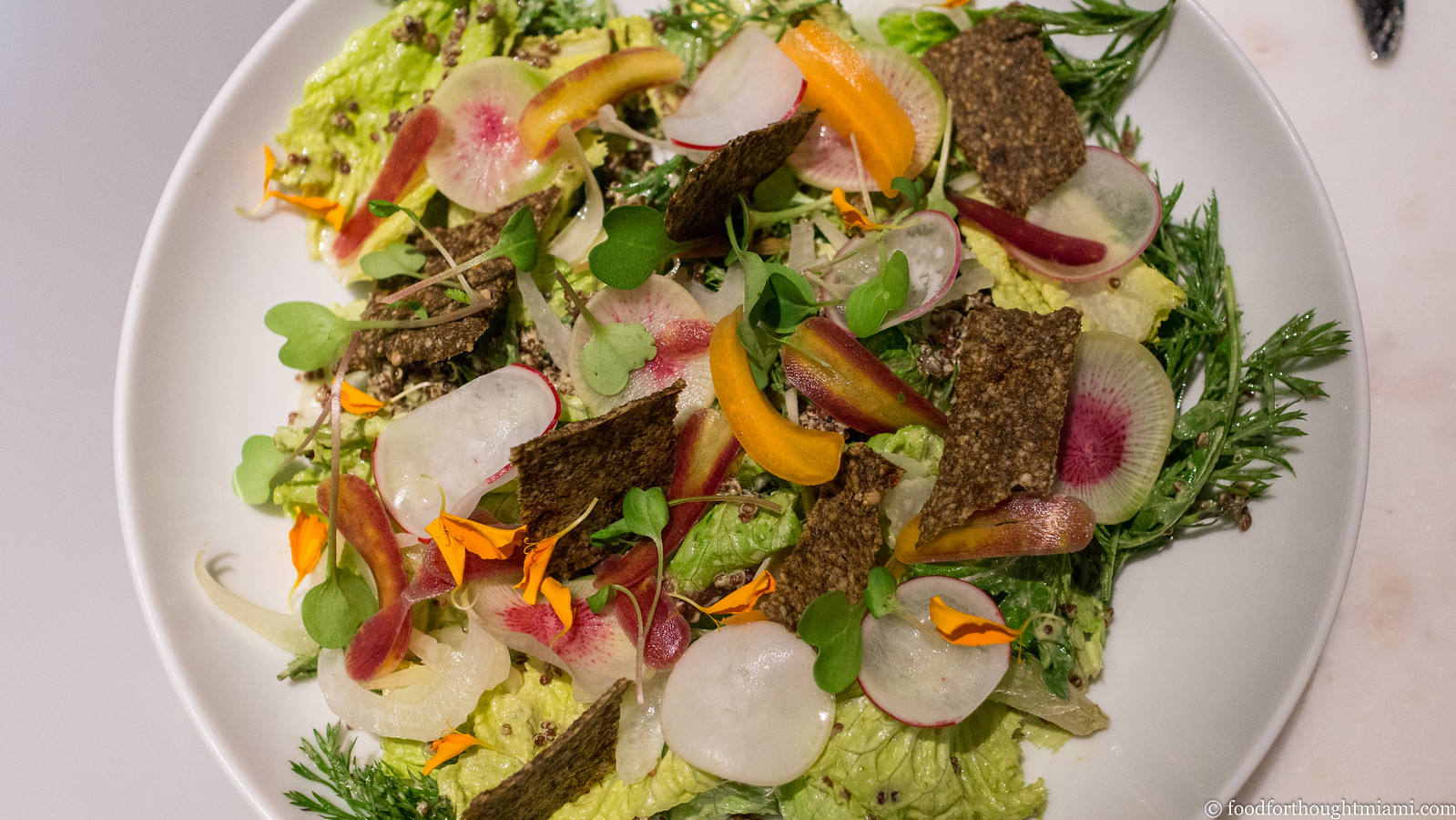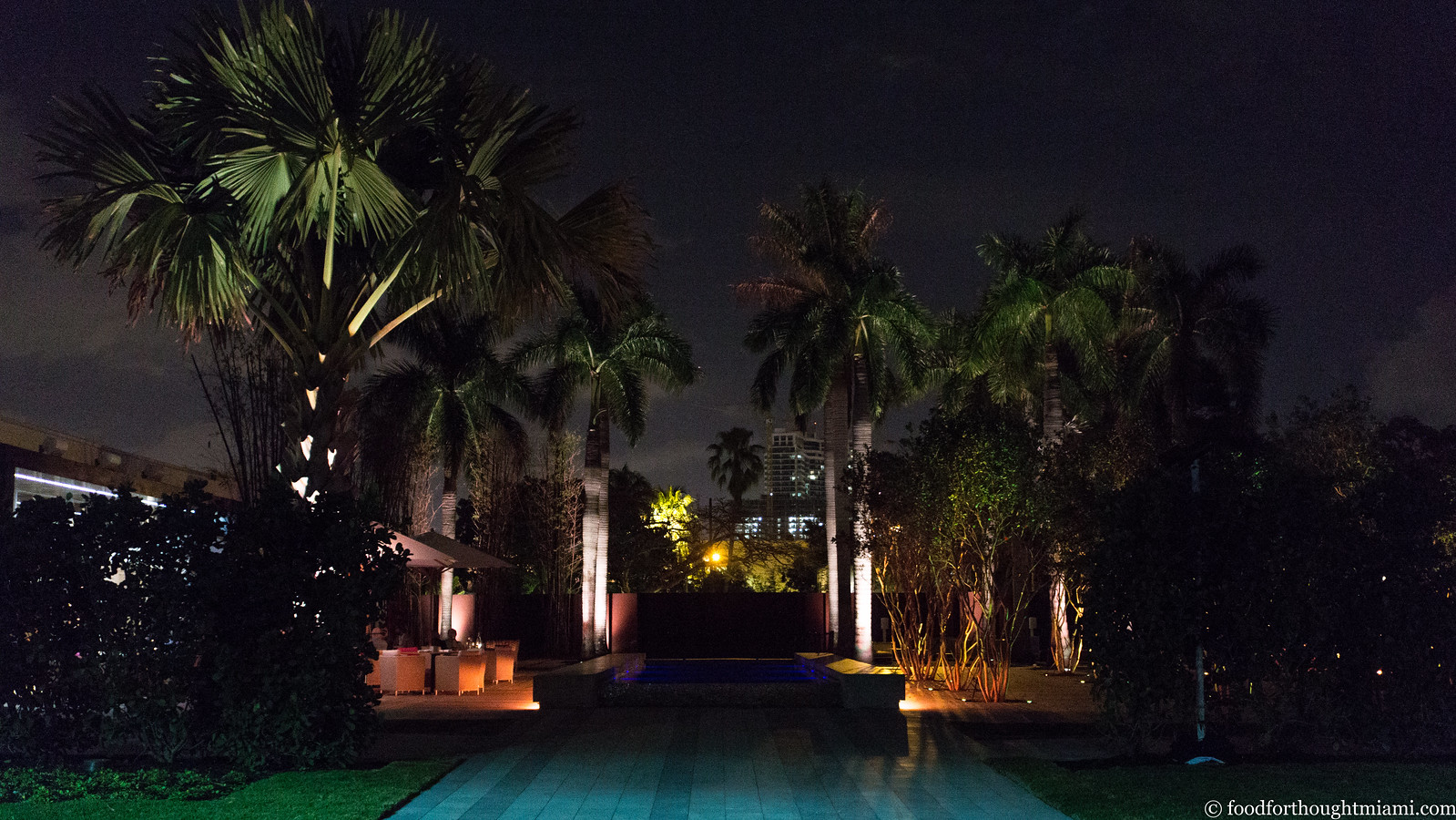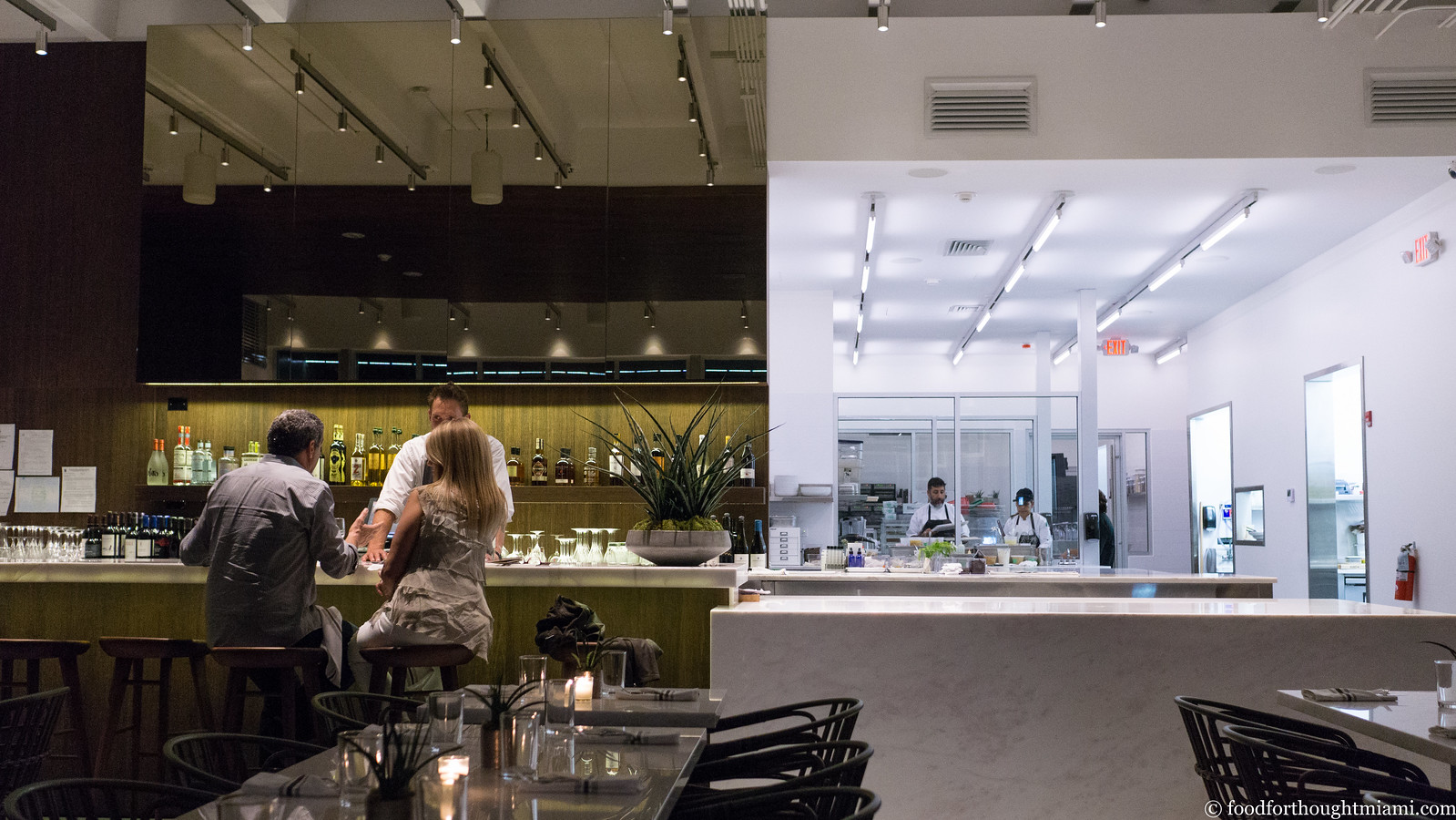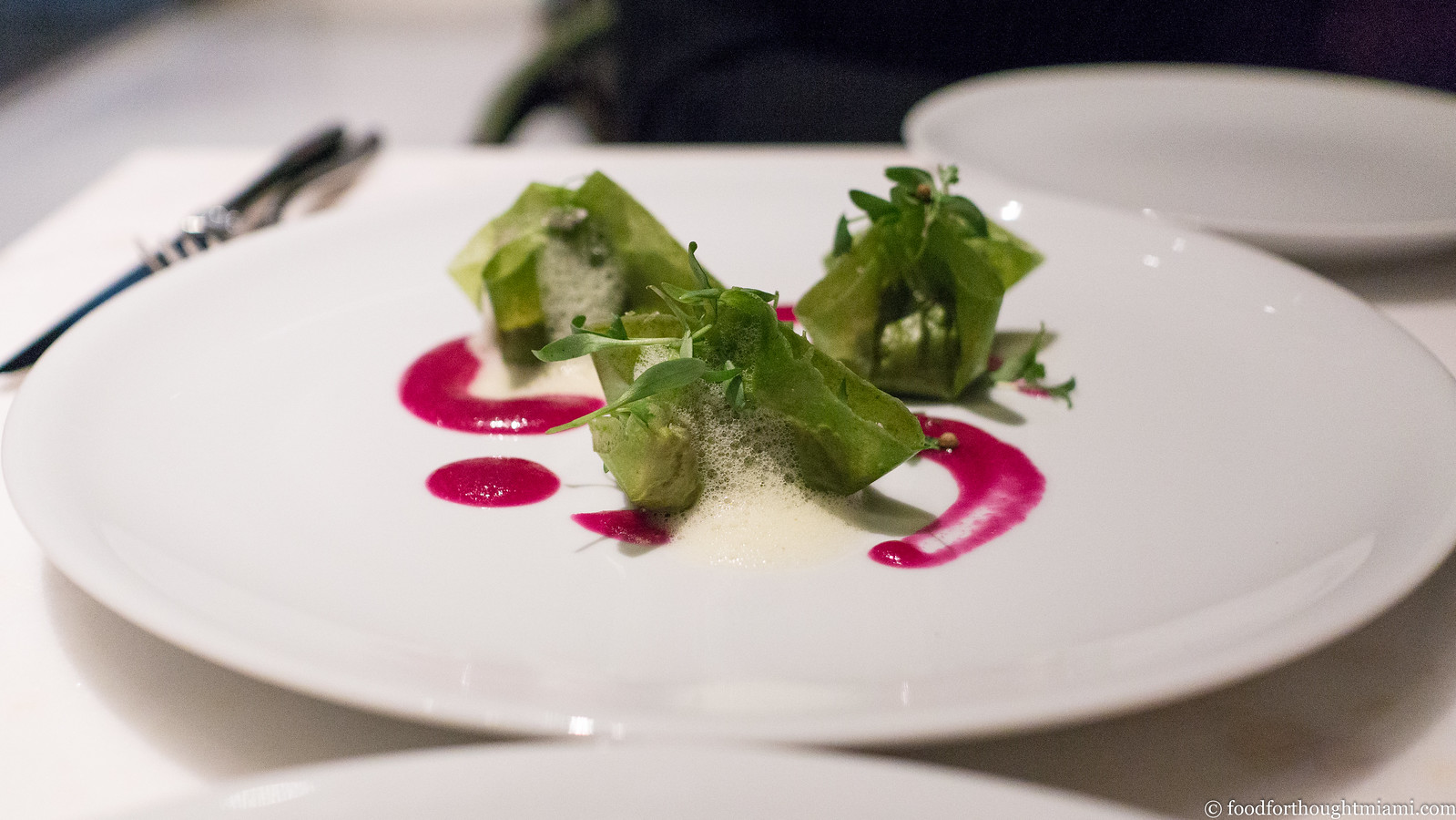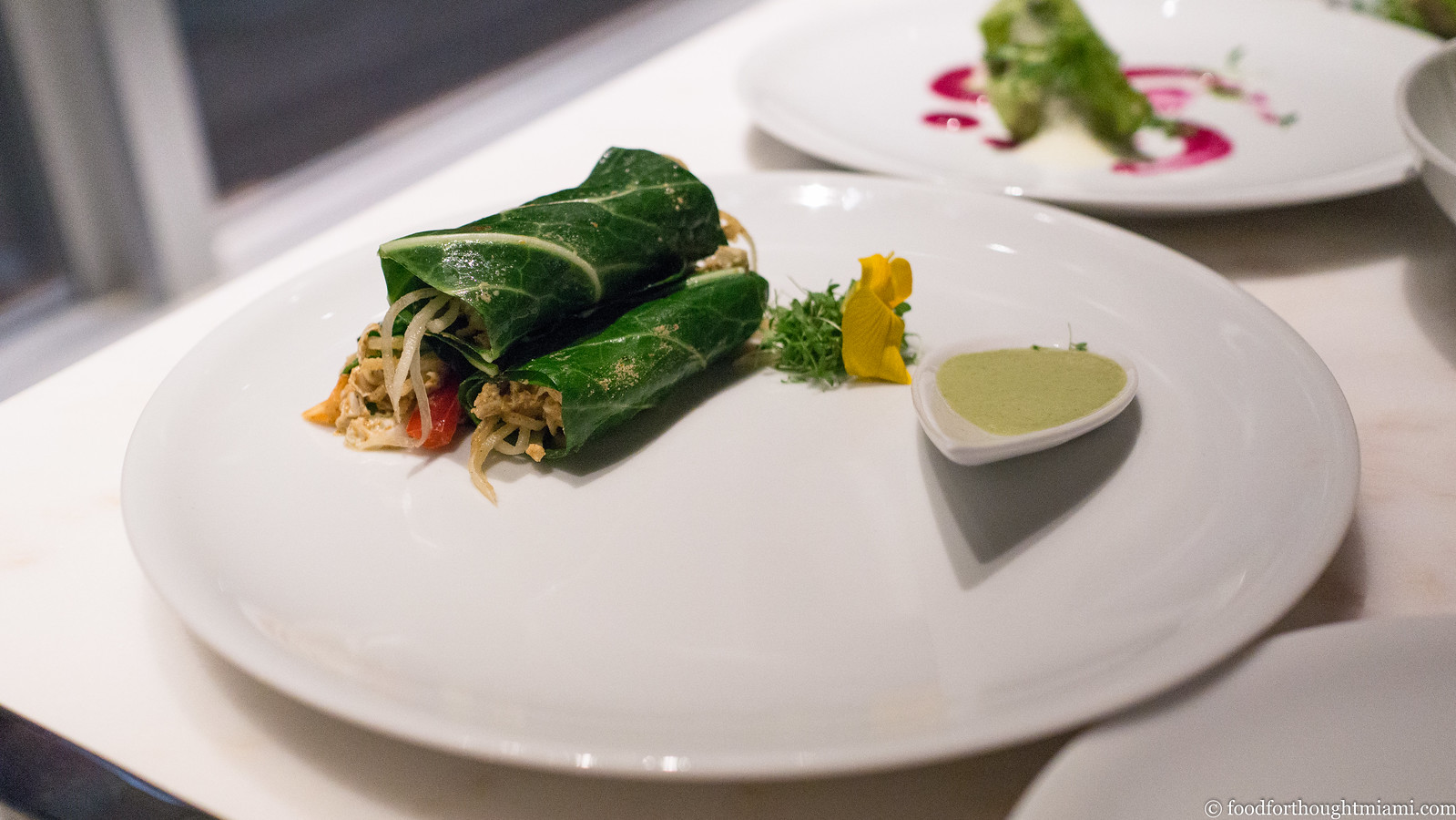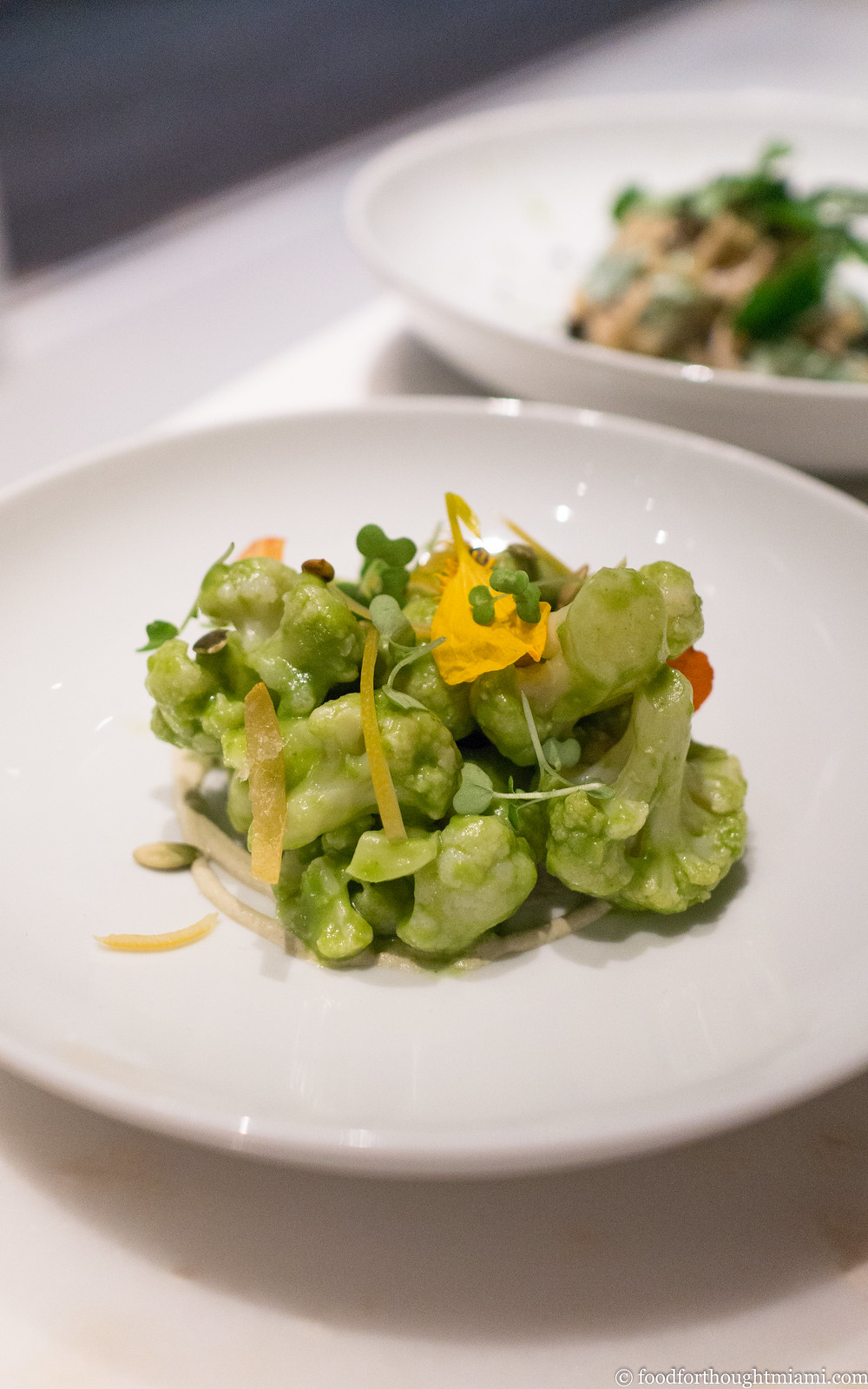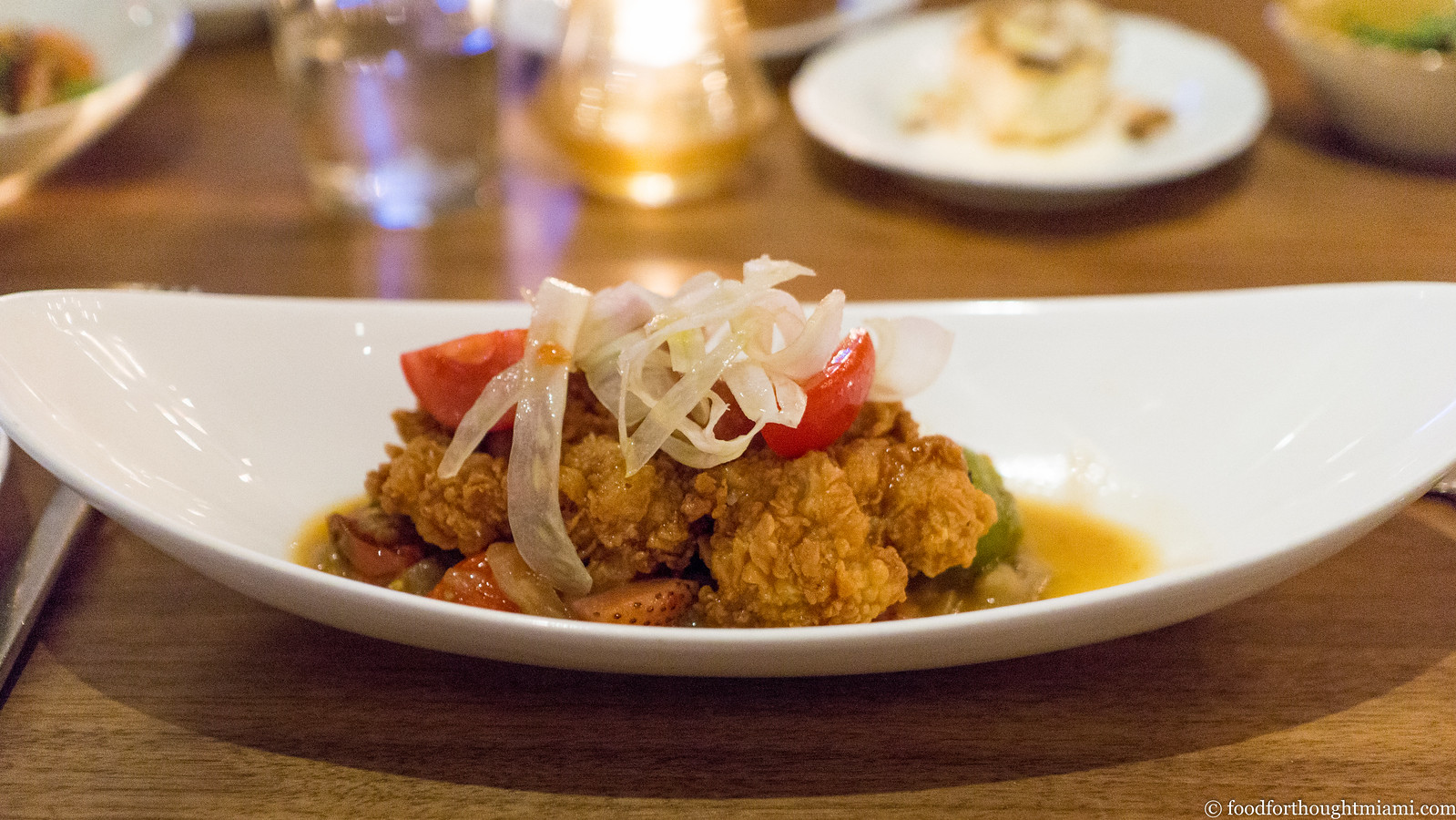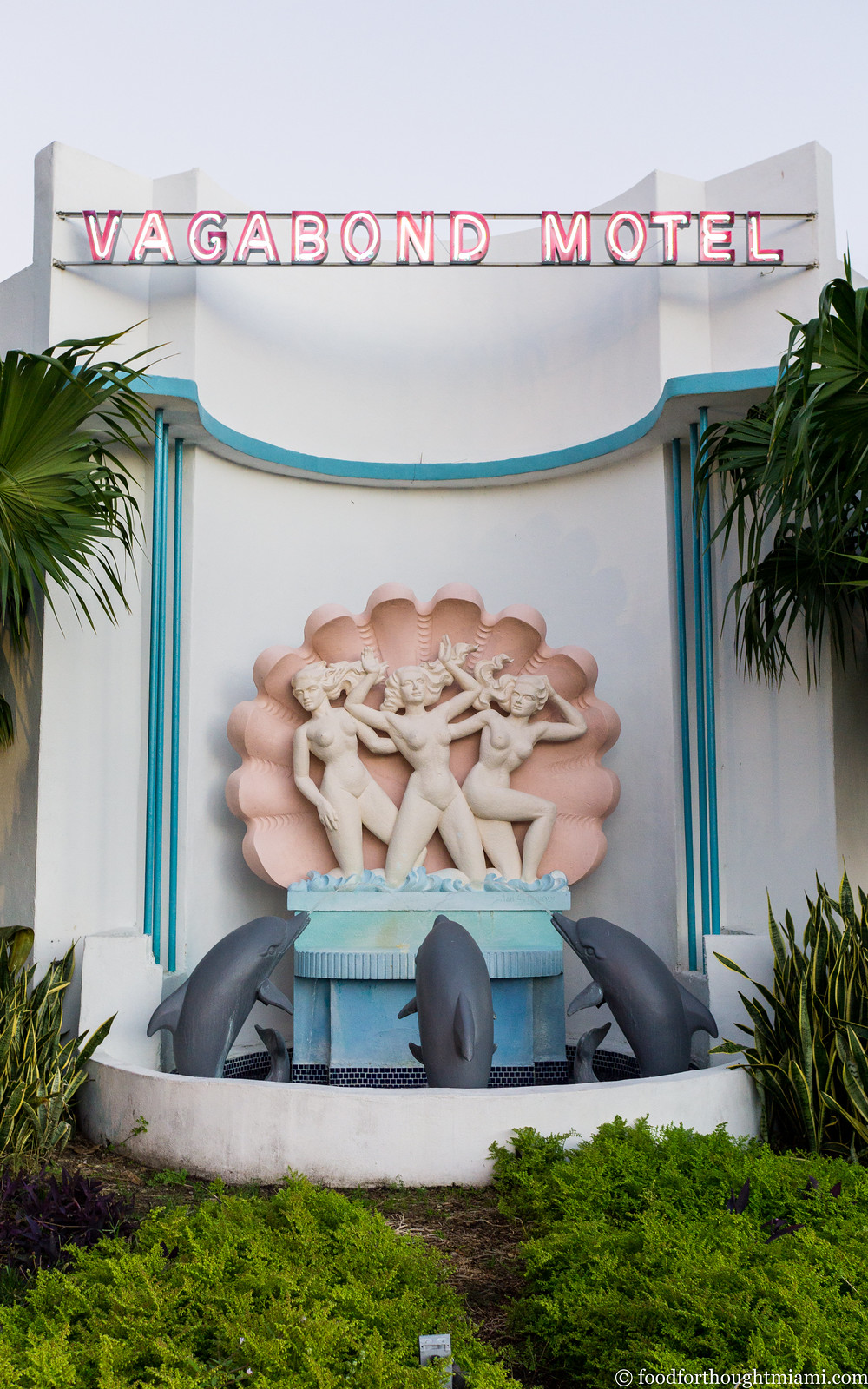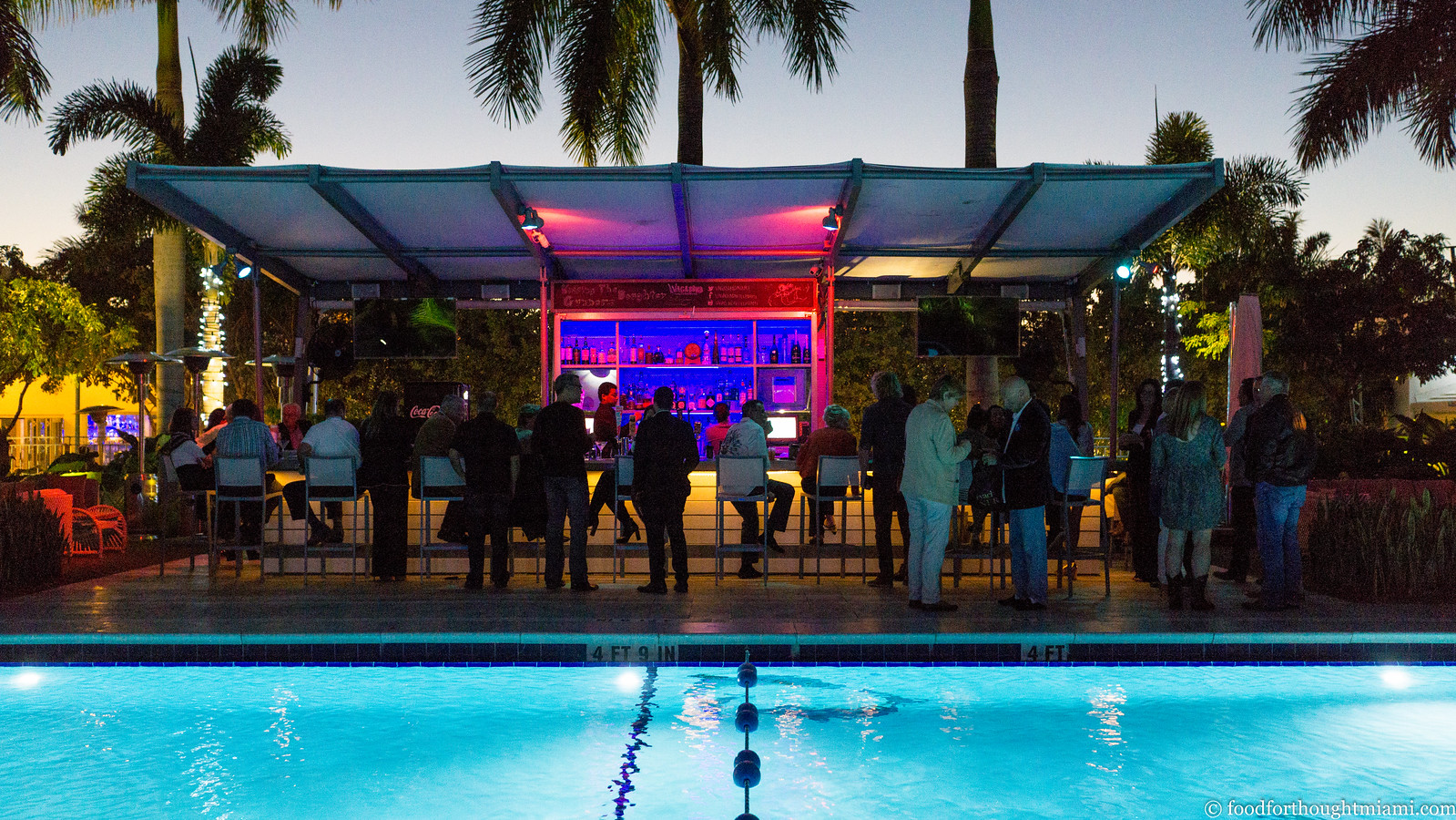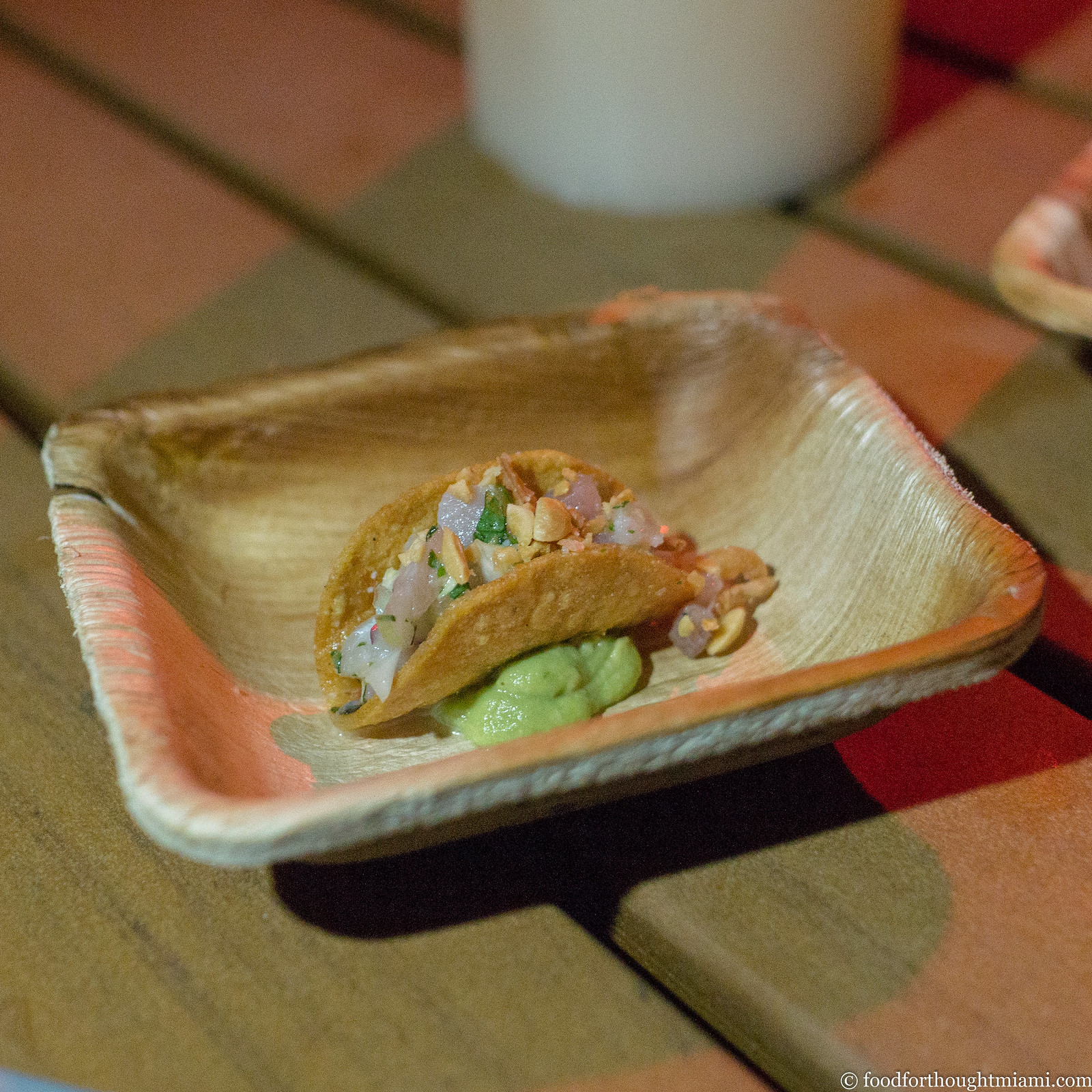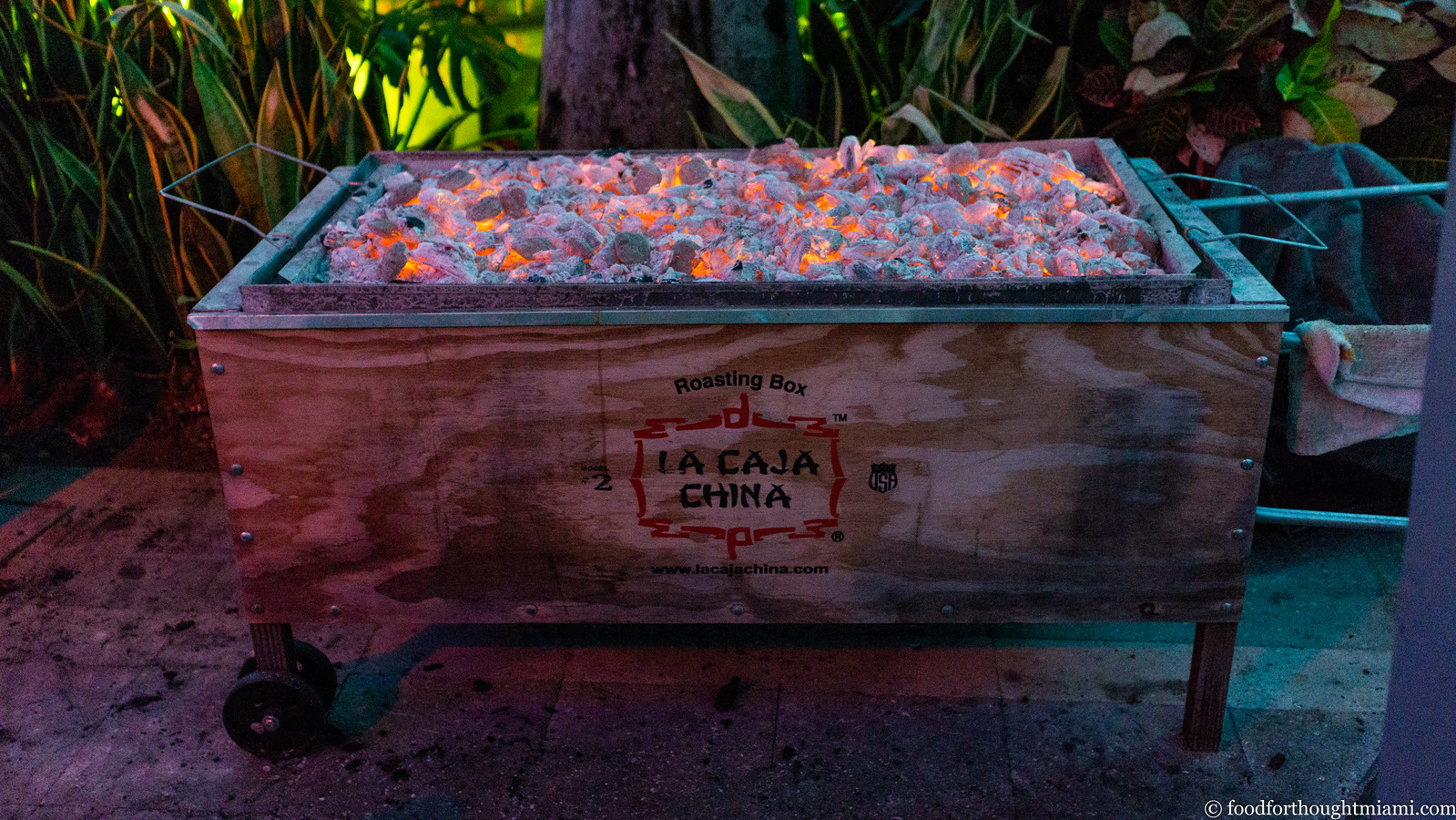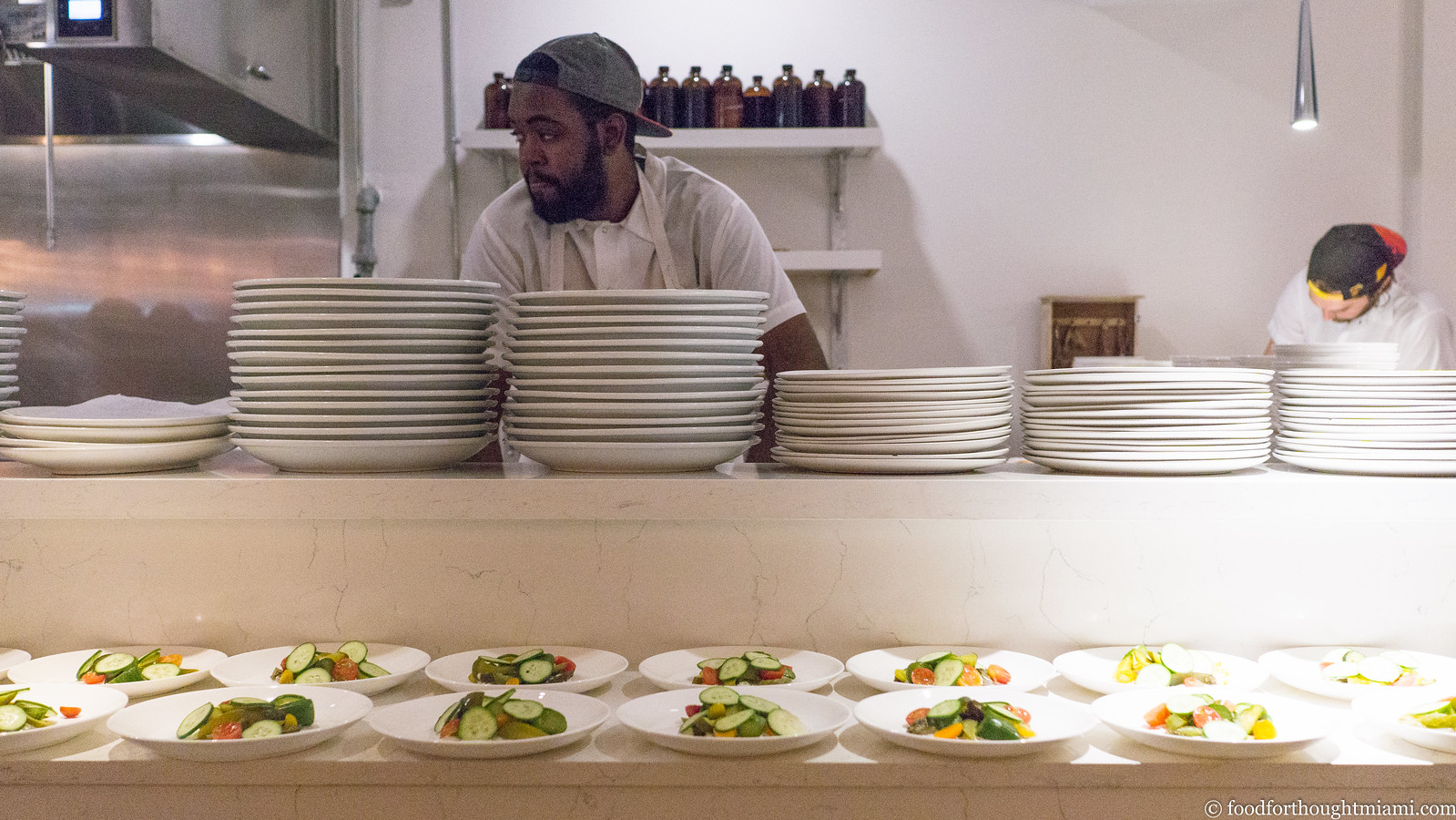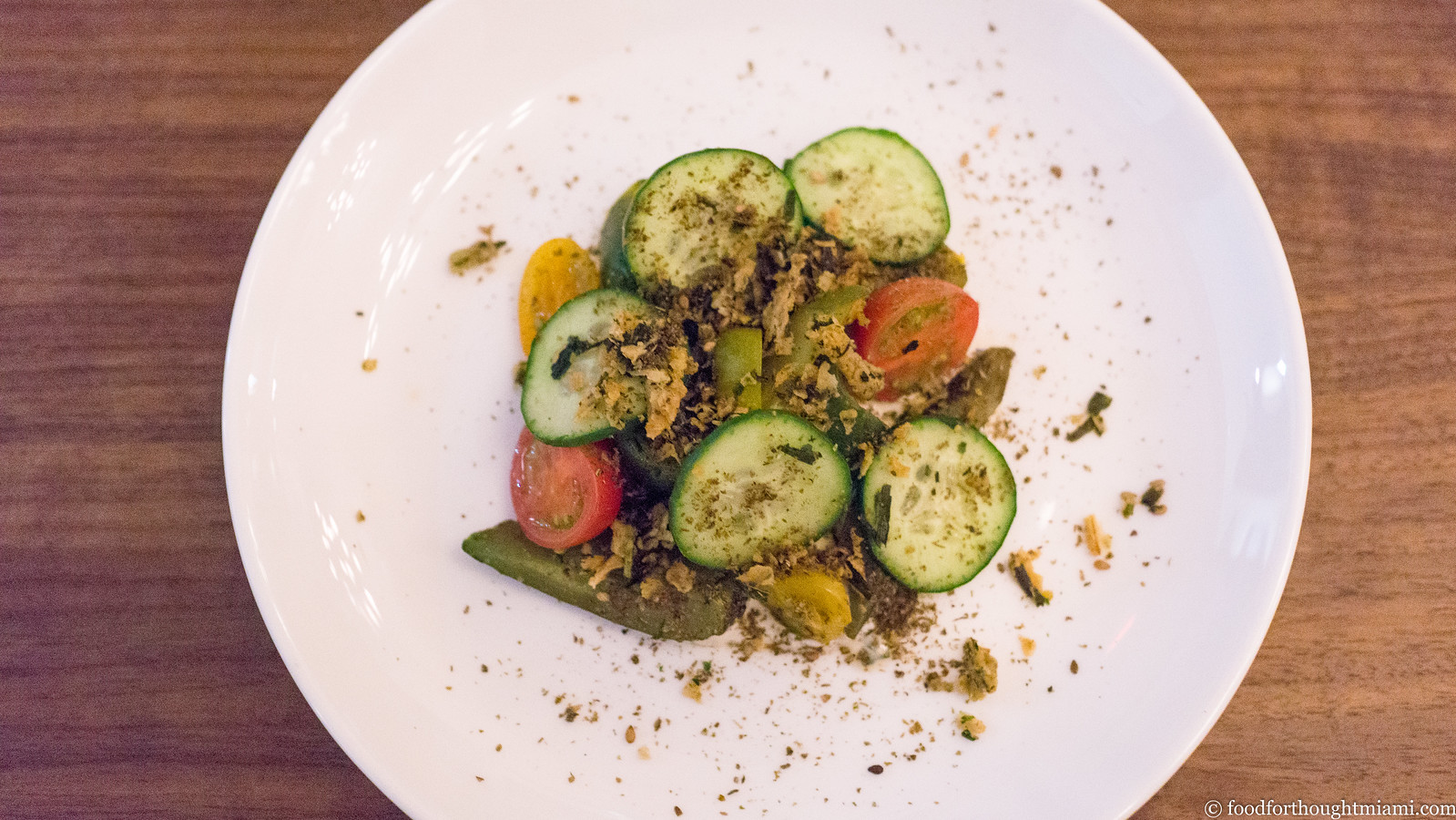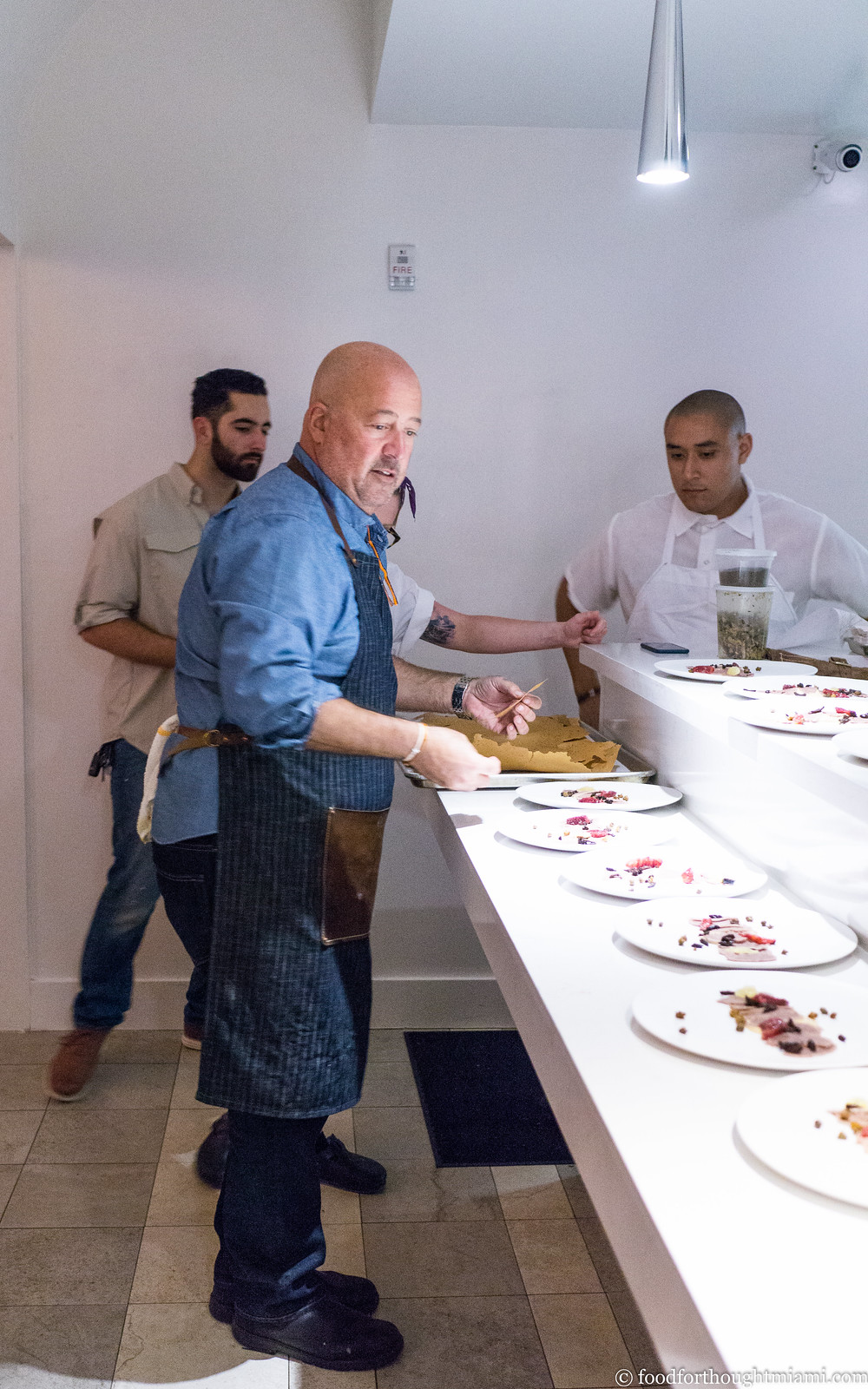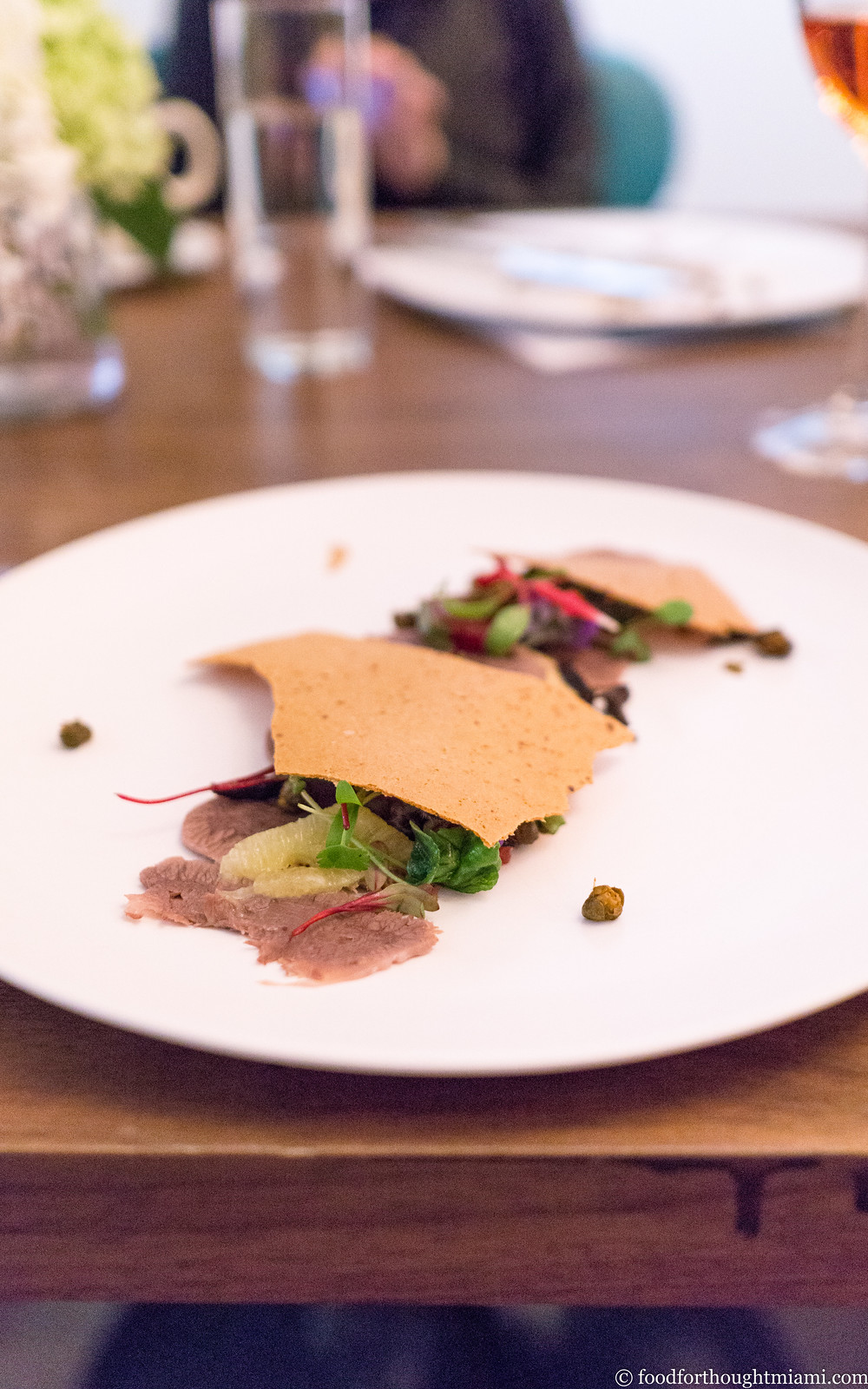Skeptical. Doubtful. Dubious. Let's just say I wasn't really so sure that I'd enjoy a restaurant committed to an entirely vegan, raw menu. It's not that I'm opposed to vegetables – I love them. But as an unrepentant omnivore who cares about flavor first and foremost, I'm wary of any dogma that would keep huge categories of delicious edible things off my plate, and even more suspicious of the notion that none of the things on that plate should be cooked.
But that's the thinking behind
Plant Food + Wine, Chef Matthew Kenney's new restaurant in Miami's Edgewater neighborhood.
[1] Kenney is a chef and "lifestyle" guru who also runs
The Gothic in Belfast, Maine as well as another
Plant Food + Wine in Venice, California. He has published several books and hosts "Culinary Academies" to teach plant-based cooking techniques, all under the tagline of "crafting the future of food."
Pleasantly surprised. That's how I felt after my first meal at Plant. Despite an entirely vegan menu where no food is heated beyond 110° (and maybe even in some instances because of that commitment), the food at Plant was mostly quite delicious. Somewhat uncharacteristically for a restaurant that is in a sense defined by what it chooses not to serve, there's as much attention paid to flavor and presentation as there is to principle. And that's a welcome distinction.
[2]
(You can see all my pictures in this
Plant Food + Wine flickr set).
The place itself is a stunner. It's on a gigantic lot with a sprawling patio bisected by a blue-lit wading pool, surrounded by towering date palms. There's as much seating outside on the deck as there is inside the dining room, which feels open and breezy thanks to its double-height ceiling, bright white open kitchen,
[3] and retracting glass doors that open the indoor and outdoor spaces up to each other.
The menu features several smaller items "for the table," followed by about eight "small plates" and around the same number of "mains," with most smaller plates priced in the low teens and larger plates hovering around the $20 mark. We ordered a couple of items from each section of the menu.
I've often puzzled over why so much plant-based food feels like penance. Vegetables can be so bright and colorful, yet so much vegan food – all the "field roasts" and "chik'n" and their ilk – looks like processed pet food. That's not the case at Plant, where vegetables are rightly celebrated.
Kimchi dumplings feature bright green translucent wrappers wrapped around a nutty filling, with even brighter beet-dyed magenta swooshes adorning the plate. I’ve gradually come around to Gael Greene’s conclusion that most foams are “insipid,” but here's one that actually tastes pointedly of ginger and contributes a nice accent to the dish. Banh mi lettuce wraps, another item "for the table," actually use deep-green collards for their casing, which are filled with a smoked chili-almond pate, crunchy napa cabbage, and slivers of pickled daikon radish and red peppers.
A sunflower caesar salad uses both crunchy romaine and peppery arugula, dressed in a thick sunflower seed dressing with a rich, tahini-like flavor.
[4] Sunflower seeds play the role of croutons; briny capers even more effectively play the role of the traditional anchovies. It happens to be a great salad, mixing both bright and deep flavors and a bunch of nice textures.
A small plate of romanesco cauliflower, lightly cooked to soften its raw edge, is tossed with a tangy salsa verde, served over a rich toasted pepita cream, and laced with ribbons of preserved lime. More good flavors: but I wished it had been given another pinch of salt and that the preserved lime had more prominence.
The MK Bowl pictured at the top is listed in the “mains” – and I have to confess that while I have no opposition to salads generally, I often struggle to think of them as a main course to a meal. But this achieved a certain substantiality, combining delicate lettuces with heartier shaved root vegetables, creamy avocado, fresh sprouts, grassy carrot greens, and crunchy hemp seeds, all lightly bound with a tangy, savory lemongrass tahini dressing. I might have wished for the sunflower-chia seed “croutons” to have more crunch, instead of the texture of wet paper, but everything else here worked.
(continued ...)

